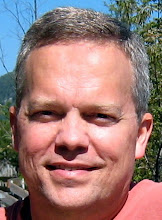Scott Ambler's Agile Modeling site has a good article on Anti-Patterns for Enterprise Modeling.
- Enterprise Modeling Anti-Patterns: "A process anti-pattern is a common strategy which sounds good in theory but in practice proves to be harmful, if not outright disastrous. This article overviews a collection of anti-patterns pertaining to enterprise architecture efforts within an IT organization. These anti-patterns are:
* 30,000 Feet and Climbing
* Bleeding Edge
* Brain Trust Parking Lot
* Buzzword-Driven Architecture
* Detailed Enterprise Modeling
* Enterprise Parking Lot
* Goldplating
* Ivory Tower Architecture
* Modeling for Modeling's Sake
* One Truth Above All Else
* Real-World Disconnect
* Strive for Perfection
* Stuck in the Weeds
* Technology Above All
* Tomorrow Suffers From Today
* Ungrounded Future
* Yesterday's Enterprise Model"
- 30,000 Feet and Climbing - The enterprise model is so high-level that it is of limited or no practical use to application teams.
- Solution: Develop reference architectures which provide working examples of individual aspects of your architecture. Roll up your sleeves and get actively involved with the development teams. Act on feedback from the development teams to evolve your model(s).
- Ivory Tower Architecture - Your enterprise architecture model(s) reflect a wishful, perfect world scenario instead of the realities of your actual environment.
- Solution: See the solution to 30,000 Feet and Climbing.
- Stuck in the Weeds - You are too far into the details, attempting to do all the work for application teams.
- Solution: Mentor developers in the architecture, work with them as equal partners on the development teams, and, after they've gotten going, focus on providing them with guidance and advice as needed.
- Brain Trust Parking Lot - Your enterprise modeling group is composed of a lot of very smart people who don't fit in well anywhere else within IT but you don't want to lose their knowledge.
- Solution: Find a way to make them useful to existing project teams, perhaps as a modeling mentor or as a subject matter expert (SME) in the business domain.


 Save This Page
Save This Page
No comments:
Post a Comment